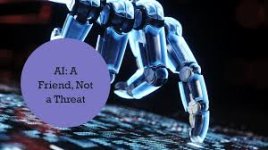Artificial Intelligence (AI) is no longer just a buzzword — it’s something we interact with almost every day, whether we realize it or not. From working professionals to local shopkeepers, AI has found its way into everyone’s life, knowingly or unknowingly. But the sector where AI is most deeply rooted is the IT industry itself.
For IT companies and organizations, AI is undoubtedly a blessing. It allows them to automate repetitive tasks, boost productivity, and save both time and money. With fewer tools and resources, AI can deliver faster and more accurate results — which is a huge win for businesses looking to scale and innovate.
However, when we shift the perspective toward employees — especially those trying to build or grow their careers in the IT field — AI can feel like a curse. Many professionals have been facing job losses and layoffs, and one major reason is the growing use of automation and AI. Roles that once required human effort are now being replaced by machines and algorithms.
This isn’t just a theory — major layoffs in the IT industry have been happening over the past few years, and automation has played a significant role in that. So yes, it might sound like I’m focusing on the negative sides of AI… but these are real facts, not just opinions.
Still, it’s important to understand that the problem isn't AI itself — it’s how we choose to respond to it. If IT professionals learn to work with AI instead of resisting it, there’s a lot of opportunity. Upskilling, staying updated with trends, and being open to learning are the keys to surviving and growing in this AI-powered era.
That said, AI hasn’t completely taken over IT companies — because the human brain remains a rare and irreplaceable asset. And maybe that’s exactly why we’re seeing more and more IT professionals shift their focus toward learning AI and machine learning tools themselves.
In the end, AI is not here to replace us — it’s here to assist us. Those who learn to ride the wave will rise with it.
For IT companies and organizations, AI is undoubtedly a blessing. It allows them to automate repetitive tasks, boost productivity, and save both time and money. With fewer tools and resources, AI can deliver faster and more accurate results — which is a huge win for businesses looking to scale and innovate.
However, when we shift the perspective toward employees — especially those trying to build or grow their careers in the IT field — AI can feel like a curse. Many professionals have been facing job losses and layoffs, and one major reason is the growing use of automation and AI. Roles that once required human effort are now being replaced by machines and algorithms.
This isn’t just a theory — major layoffs in the IT industry have been happening over the past few years, and automation has played a significant role in that. So yes, it might sound like I’m focusing on the negative sides of AI… but these are real facts, not just opinions.
Still, it’s important to understand that the problem isn't AI itself — it’s how we choose to respond to it. If IT professionals learn to work with AI instead of resisting it, there’s a lot of opportunity. Upskilling, staying updated with trends, and being open to learning are the keys to surviving and growing in this AI-powered era.
That said, AI hasn’t completely taken over IT companies — because the human brain remains a rare and irreplaceable asset. And maybe that’s exactly why we’re seeing more and more IT professionals shift their focus toward learning AI and machine learning tools themselves.
In the end, AI is not here to replace us — it’s here to assist us. Those who learn to ride the wave will rise with it.

